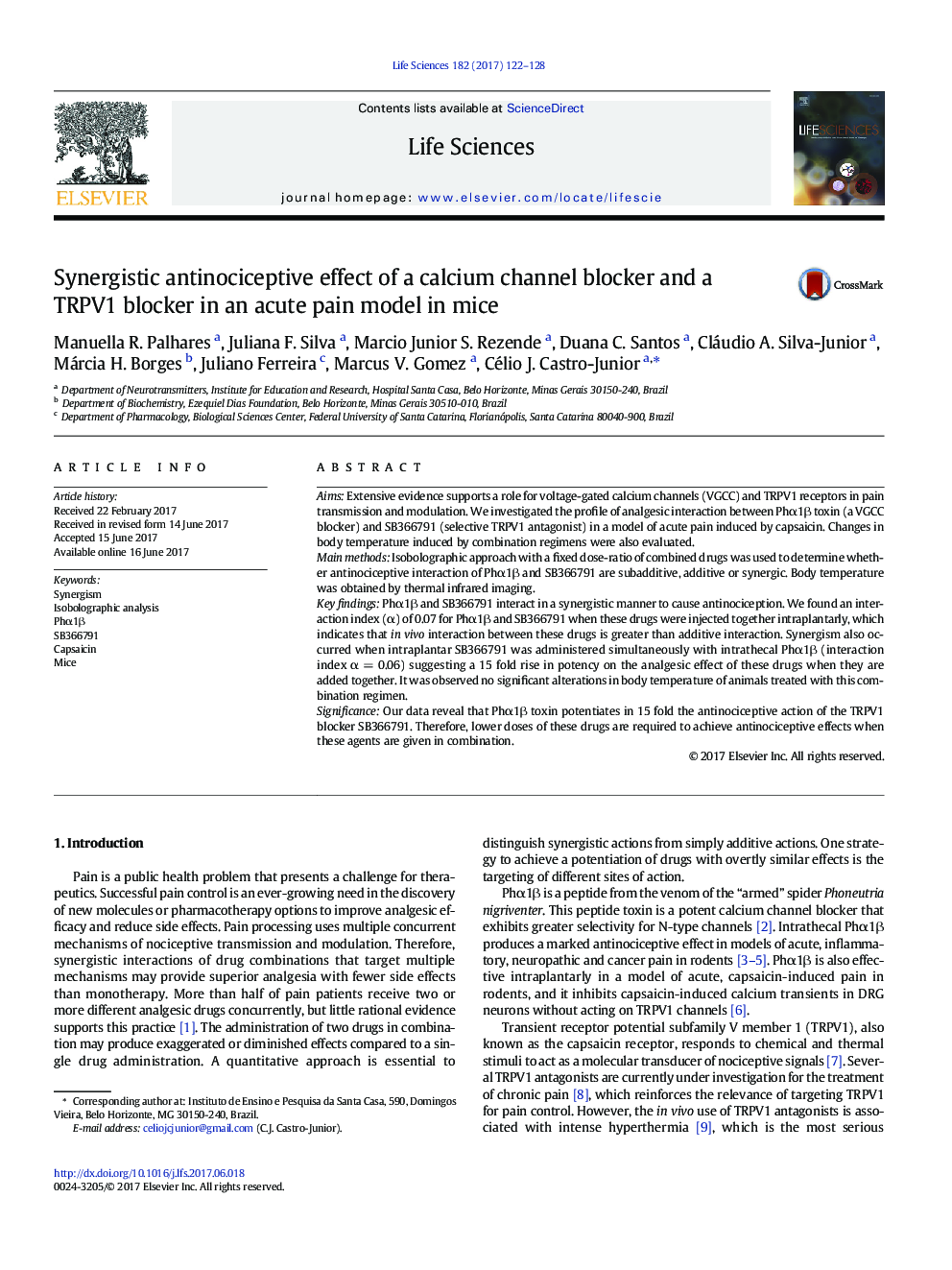| Article ID | Journal | Published Year | Pages | File Type |
|---|---|---|---|---|
| 5556867 | Life Sciences | 2017 | 7 Pages |
AimsExtensive evidence supports a role for voltage-gated calcium channels (VGCC) and TRPV1 receptors in pain transmission and modulation. We investigated the profile of analgesic interaction between Phα1β toxin (a VGCC blocker) and SB366791 (selective TRPV1 antagonist) in a model of acute pain induced by capsaicin. Changes in body temperature induced by combination regimens were also evaluated.Main methodsIsobolographic approach with a fixed dose-ratio of combined drugs was used to determine whether antinociceptive interaction of Phα1β and SB366791 are subadditive, additive or synergic. Body temperature was obtained by thermal infrared imaging.Key findingsPhα1β and SB366791 interact in a synergistic manner to cause antinociception. We found an interaction index (α) of 0.07 for Phα1β and SB366791 when these drugs were injected together intraplantarly, which indicates that in vivo interaction between these drugs is greater than additive interaction. Synergism also occurred when intraplantar SB366791 was administered simultaneously with intrathecal Phα1β (interaction index α = 0.06) suggesting a 15 fold rise in potency on the analgesic effect of these drugs when they are added together. It was observed no significant alterations in body temperature of animals treated with this combination regimen.SignificanceOur data reveal that Phα1β toxin potentiates in 15 fold the antinociceptive action of the TRPV1 blocker SB366791. Therefore, lower doses of these drugs are required to achieve antinociceptive effects when these agents are given in combination.
